
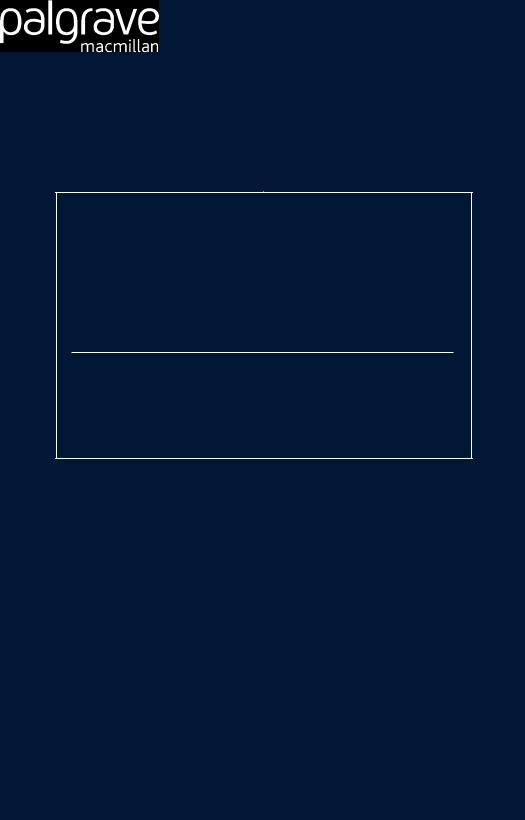
How to Program
Using Java
Tony Jenkins and Graham Hardman

How to Program Using Java
Tony Jenkins
Graham Hardman
Illustrations by Christine Jopling
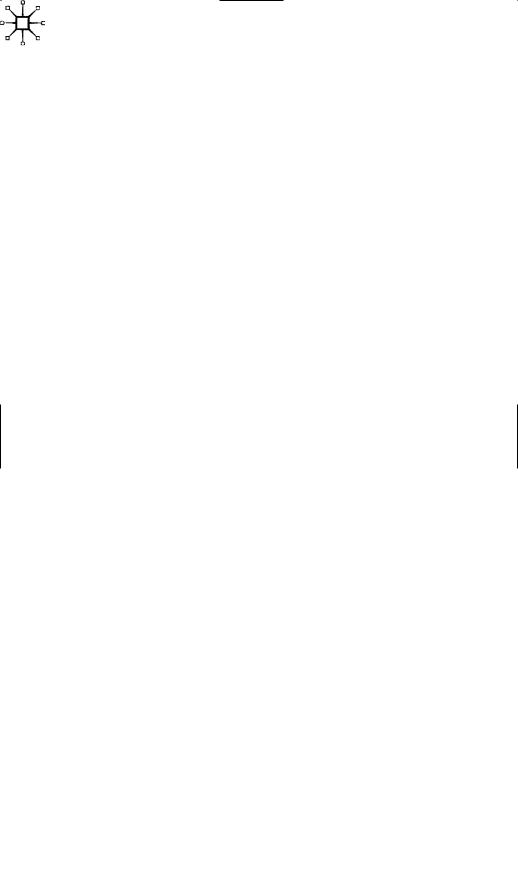
© Tony Jenkins and Graham Hardman 2004
All rights reserved. No reproduction, copy or transmission of this publication may be made without written permission.
No paragraph of this publication may be reproduced, copied or transmitted save with written permission or in accordance with the provisions of the Copyright, Designs and Patents Act 1988, or under the terms of any licence permitting limited copying issued by the Copyright Licensing Agency, 90 Tottenham Court Road, London W1T 4LP.
Any person who does any unauthorised act in relation to this publication may be liable to criminal prosecution and civil claims for damages.
The authors have asserted their rights to be identified
as the authors of this work in accordance with the Copyright, Designs and Patents Act 1988.
First published 2004 by PALGRAVE MACMILLAN
Houndmills, Basingstoke, Hampshire RG21 6XS and 175 Fifth Avenue, New York, N.Y. 10010
Companies and representatives throughout the world
PALGRAVE MACMILLAN is the global academic imprint of the Palgrave Macmillan division of St. Martin’s Press, LLC and of Palgrave Macmillan Ltd. Macmillan® is a registered trademark in the United States, United Kingdom and other countries. Palgrave is a registered trademark in
the European Union and other countries.
ISBN 1–4039–1223–8
This book is printed on paper suitable for recycling and made from fully managed and sustained forest sources.
A catalogue record for this book is available from the British Library.
10 |
9 |
8 |
7 |
6 |
5 |
4 |
3 |
2 |
1 |
13 |
12 |
11 10 09 |
08 07 06 05 04 |
||||||
Printed and bound in China

This book is respectfully dedicated to all SysAdmins. Now can we have some more disk quota, please?

Using this book
Deciding what to read
This book is meant to be read by someone who is learning to program. It is not meant to be a reference. The first chapter explains what’s in each of the following chapters in some detail, but briefly:
Chapter 0 |
– What this book is |
p. 1 |
… tells you in much more detail what this book is, and why it is like that. |
||
Chapter 1 |
– Programming |
p. 11 |
… explains what programming is, and why you might want to be able to do it.
Chapter 2 |
– The mechanics |
p. 20 |
… describes the details of getting a computer to run your program. |
|
|
Chapter 3 |
– Before you start |
p. 29 |
… explains what you are going to need and also considers why many people find learning to program difficult.
Chapter 4 – Objects. The building block |
p. 39 |
… has a close look at what precisely the basic component of an object-oriented computer program – an “object” – is.
Chapter 5 – A word on analysis and design |
p. 52 |
… puts programming into context by looking briefly at the processes of analysing a problem and designing a solution.
Chapter 6 |
– A first look |
p. 63 |
… provides a first look at Java by developing a simple Java object. |
|
|
Chapter 7 |
– Programming (don’t panic!) |
p. 74 |
… shows why programming requires a structured, controlled approach, and why good programming style is so important.
Chapter 8 – The basics |
p. 86 |
… introduces the first Java in the book – values, variables, assignments, and simple output.
Chapter 9 – Input |
p. 112 |
… describes how to accept input values from the user. |
|
Chapter 10 – A word on testing |
p. 124 |
… breaks off briefly to show why it is so important that all programs are tested thoroughly and methodically, and to present some ways of testing simple programs.
Chapter 11 |
– A first class |
p. 135 |
… shows how to create a class of objects in Java. |
|
|
Chapter 12 |
– Classes and objects |
p. 152 |
… and shows how to use those classes in programs. |
|
|
Chapter 13 |
– Get your hands off my data! |
p. 167 |
… describes two basic functions that are carried out on objects – setting their interesting values and finding out what these values are.
iv

Using this book |
v |
Chapter 14 – Making things happen. Sometimes |
p. 178 |
… returns to the basics of Java and describes how to make a program behave in different ways in different situations.
Chapter 15 – Making things happen. Again and again |
p. 202 |
… extends the previous chapter to show how to make a program repeat an operation over and over again.
Chapter 16 – More methods |
p. 221 |
… shows how to use the techniques from the preceding two chapters in implementations of object types.
Chapter 17 – Collections |
p. 236 |
… concludes the description of features of Java by showing how programs can be written to handle large collections of data rather than just single values.
Chapter 18 – A case study |
p. 261 |
… ties the chapters together by describing and illustrating the process of developing a program from specification to final implementation.
Chapter 19 – More on testing |
p. 294 |
… reminds us that all programs should be tested and that more complicated programs require more thorough testing still.
Chapter 20 – Onward! |
p. 309 |
… rounds off the book with brief descriptions of a few of the more advanced Java features.
If you’re approaching programming as a complete novice you should aim to work through these chapters in this order. Don’t be tempted to skip straight to the chapters with Java in! It’s extremely important that you understand what you’re trying to achieve and the best ways of achieving that before you go anywhere near any programs. This might seem odd, but please bear with us!
If you’ve already programmed in some other language (particularly something like Pascal or C, or definitely if you’ve met C ) and just want a flavour of Java you’re probably safe to skip on to Chapter 6 or 7. It would still be a good plan to skim through the earlier chapters, though.
At the end of the book you’ll find a quick Java Reference, a Glossary and an Index. This is where to look when you realise that you need that little bit of information but can’t remember where it was.
Understanding what you read
There are some conventions that you need to keep in mind as you read.
In the text, anything in this font is a Java statement or name. Anything in this font is not.
All programs and classes also appear in this font. Like this:
/*
Duck.java
A simple Duck class.
AMJ
22nd January 2003 */
public class Duck
{
private String name;

vi |
How to program using Java |
public Duck ()
{
}
}
Anything not in that font is not a program. Fragments of programs also appear in this font:
System.out.println ("Quack");
Anything in this font is correct Java.
Where a user is entering a value, the user’s typing is shown in bold:
Enter your name: Tony
Sometimes it is necessary to show just the general format of the Java statement. This appears like this:
format of a Java statement
For example:
type identifier ;
Anything that appears between and in these examples is a description of what is required in the program. Examples presented like this are not valid Java!
Finally, sometimes there are things that need to be laid out in a way that looks like a program, but isn’t a program. This appears in the same font as a program, but in italics, like this:
IF the value of "sold to" is blank THEN
Set the value of "sold to" to the Reserve object OTHERWISE
Display an error message – the Duck is already sold END IF
This is not valid Java.
There are many definitions in the book. Words that are defined in the Glossary at the end appear like this in the text.
A note on programming style
You will learn that programming style is an important element of writing a program. Style refers to the way in which a programmer lays out a program, what names are chosen for various things in the program, and what else might be added. Programming style is a very individual thing, and develops in any programmer over many years; it’s very much like handwriting.
The programs and examples in this book were written by two people. We each have rather different programming styles, so we’ve negotiated and agreed to adopt a “house style”. You cannot imagine the bloodshed. We think that the style we have finally agreed to adopt is a reasonable compromise and that it should be reasonably clear.
Develop your own style as you learn to program. Copy ours for the moment if you want to, but if you find things that you don’t like don’t follow them. Just be consistent.
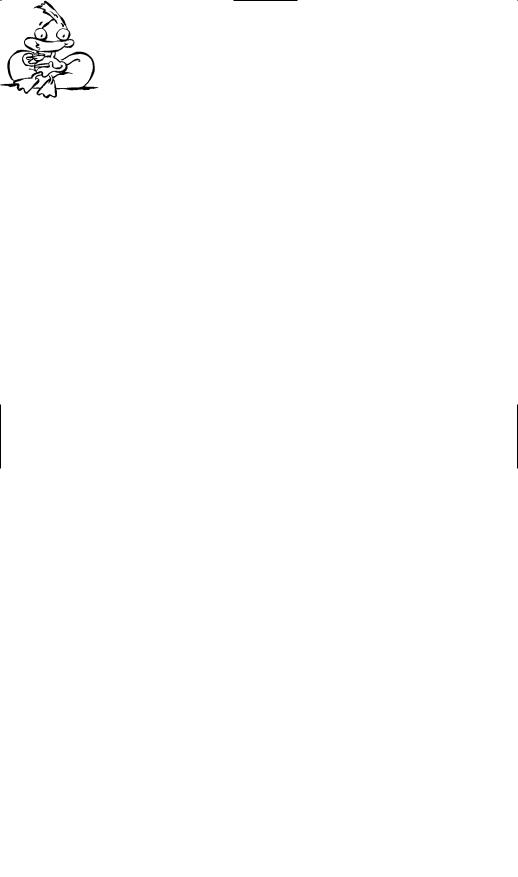
Using this book |
vii |
A note on persons
You will discover soon that the chapters in this book make use of the first person, and the first person singular in particular. This might seem odd in a book that has been written by two people. The thing to remember is that each chapter was, in fact, written by just one person. You can amuse yourself, if you like, by trying to work out who wrote which one … There is the occasional clue.

To the Student
Hi.
Welcome to the book. We hope you like it.
If you’re a student just starting out on your first programming course, this book is for you. This book contains what we think you’ll need to know as you go through your course. We very much hope you’ll enjoy reading it and come to enjoy programming.
Because we want to get something absolutely clear before we go any further; programming is enjoyable. It’s a creative pastime, and has been called by some a craft. Writing a program is the process of creating something from nothing – the process of creating something that solves a real problem and hopefully makes the world a better place. A complete and correct program can be a source of great satisfaction to a programmer. Even the appearance of the lines of a program laid out on a sheet of paper can be a thing of beauty, almost like a poem.
But enough of these fine words. We would be lying to you if we didn’t admit that many people do not especially enjoy learning to program. Many people do find it difficult, but just as many take to it quickly and easily; we suppose that you’ll be finding out which one you are in the next few weeks. Whichever turns out to be you, just keep in mind that anyone can get there eventually; there’s nothing special about people who can write computer programs.
This book is not like many of the other books on programming that you can see on shelves in the bookshops or libraries. For a start there’s no chapter on the history of computers, gloriously illustrated with highly amusing photos and hairstyles from the 1950s. No. We’ll be assuming that if you want to look at that sort of stuff you know where to find it, and you’ll go and seek it out. No. This is a book about programming.
You notice that we say programming and not Java? That’s important. What we are about here is learning to program, and the programming language that we have chosen to use is something called Java. The skills and techniques that you’ll find in this book, and which you’ll learn, can be applied to many, if not most, other programming languages. A mechanic does not learn to repair just one kind of car, and a chef does not learn to cook just one kind of pie. So a programmer does not learn to program in only one language.
Just reading this book won’t turn you overnight into a programmer. Reading this book will help turn you into a programmer, but you’re going to have to do other things. You’re going to have to write your own programs. You’re going to have to practise. There are plenty of our programs in this book, and the first stage for you is to look at these and understand them. Then you’re going to have to take the leap of starting to write your own programs. This transition – from understanding a program that someone else has written, to writing your own programs – is difficult, and let no one tell you otherwise. When you’ve managed it you’ll have achieved something that should make you very proud.
The chapters that you’re going to read are quite short. This is quite deliberate. With any luck you’ll be able to find time to read them between classes or on the bus home, or something. As you read, doodle on the book, or make notes. Read actively and think about what you’re reading. Learning is about thinking and reflecting, not just about reading.
viii
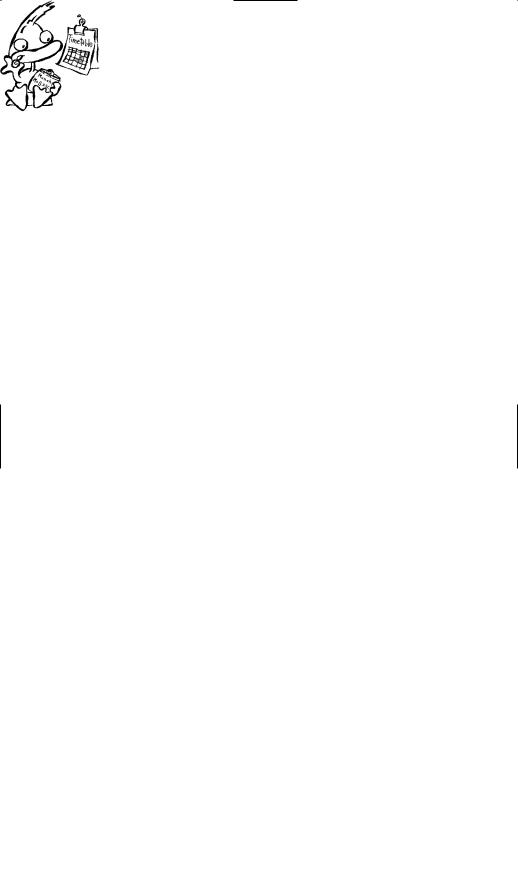
To the Student |
ix |
Right. Sermon over. There’s one last practical thing. You’ll find out soon that we’re going to assume that you’ve been given a copy of something that we’re going to call your Local Guide. This should explain how the Java system that you’re going to use works, and should fill you in on any other little local details. If you’ve got that (and there’s no need to look inside it just yet), all that remains to be said is …
… let’s go and do some programming!

To the Teacher
Hello. Welcome to a book about learning to program.
Before we go any further, you need to be absolutely clear about what it is that you are holding in your hand. This is possibly a book with the name of a programming language in the title that is unlike any book about with the name of a programming language in the title that you have encountered before. And you have probably encountered many. Too many.
A big claim, that. But this is not a book about Java. This is not a book that seeks to explain all the minute details of the Java language.1 This book contains no UML and none of whatever the flavour of the month is at the moment in systems development. This is not a book that an experienced programmer, working in industry, would use as a reference while working on some commercial project. There are lots of books like that, and lots of books written for experienced programmers, and this is not one of them.
This book came about like this. We’ll let Tony explain.
I’ve been to a few conferences on teaching computing, and I’ve given a few presentations and so on describing some of my ideas on what’s wrong and right with the way we teach programming. I think I’ve come to the conclusion that there’s rather more that’s wrong than right. A publisher’s rep came up to me at one of these happy events and started to pester me to write my own Java book. I declined, since there were already far too many Java books about and I saw no need to add to this needlessly large pile of paper. More to the point, I didn’t know Java, even if it was flavour of the month at the time.
The problem that then emerged was that this was a persistent publisher’s rep. I kept finding that she kept popping up in my office. I will admit to having been bought a beer, but despite advice from other authors, I always seemed to miss the free lunch. Eventually, during ITiCSE 2001 at Canterbury, I cracked and agreed to write something. But only on my terms. I was not going to write another totally unnecessary book about Java. I was, in fact, going to write a book about programming and C . I knew C , you see. It was sort of last month’s flavour that was still quite good.
The C book has been and gone. You might have seen it; it’s the one with all the sheep. Now we come to the Java version. First, let’s be very clear that this is not just the C book rewritten in Java. Some of the chapters are similar, yes. The style is not completely different, even if the sheep have mysteriously become ducks. But the whole basic approach and structure have been revisited. The main change is that Java demands a much earlier and deeper discussion of objects (which is present and correct), and that objects need to be used more and throughout. The rest of the material has all been revisited too, and changed where needed. Underneath, though, the approach is the same – the underlying belief is that students need to learn to program, they do not need to learn Java or C or some other language. And they need to understand that.
That is why this is a book about learning to program. Specifically this is a book that is intended to support a student following an introductory programming course in further or higher education. There is sufficient Java in this book to be included in such a course; there are also some pointers in the final chapter that would be of interest in the
1You can probably tell that from the size!
x

To the Teacher |
xi |
more ambitious courses.2 My hope is that after reading this book, and after following your course, a student would be able to write some reasonably complex Java programs and make sensible use of one of the many other Java books that are available.
Now let me explain why this book is like this. I have taught programming for many years in what is probably one of the most respected university computing departments in the UK. Every year I have some successes, and every year there are failures. I see students struggle with this topic; they are struggling with something that lies at the very heart of our discipline. I often see students suffer as they attempt to come to terms with programming; often I have seen them drop out of their degree simply to avoid more programming. I have certainly seen them carefully choosing course options in future years to avoid anything that resembles programming.3 Your students might be different, but somehow I doubt it (and if you think they are I respectfully recommend a second, closer, look). This sad state of affairs just cannot be right.
One aspect of this problem (or at least one issue that contributes to the problem) is the nature of the programming textbooks available. These are often weighty tomes indeed, and many run to well over 1000 pages. You know the ones I mean. Most contain far more than could ever be learned effectively in a single course that is, after all, only one part of what a student is expected to study during the year. These books (there are a few honourable exceptions, of course) simply do not meet the needs of our students.
There was one last thing that I had to do before starting on the Java book. I had to learn some Java. Oddly enough, I did not seek out a Java programming course. I did not sit in a room with 200 or more other people trying to learn Java. No. I found someone who knew some Java (so a welcome to Graham!), I got him to tell me the basics, and then I had some fun writing some programs. Isn’t it odd that we still expect students to learn to program from attending our lectures?
Now, this book works like this. It not our intention, or our place, to try and replace your lectures. The place of this book is to support your lectures by providing something that your students will actually read, hopefully before your lecture. Our job is to explain to them what’s coming up, why it’s important, and why it’s useful. Each chapter should occupy about a week in a 20-week course; for a student this week should probably include a couple of lectures, some supervised practical time, and opportunities for plenty of practice. There are some exercises at the end of each chapter; please add in some of your own to fit your own local system or needs.
You might think that sometimes our explanations are a little simplistic. Sometimes we admit that we are, in Civil Servant terms, “economical with the truth”. This approach is essential with a language as complex as the language that Java has now become. There are so many little details that can tend to get in the way of the real business of the day, which is to learn to program. Sometimes we’ve added a more complete explanation as a footnote; you might well want to go into more detail, particularly with your more experienced or advanced students. It’s up to you.
As for the technical details, all the programs in this book have been written and tested using, at the earliest, version 1.4.0 of the JDK running on a Linux platform. We believe that all the programs work (except where stated otherwise),
2But those teaching more ambitious courses would do well to ponder whether it is better for a student to understand a little Java or to be totally baffled by a lot of Java.
3At Leeds there is a second year course on Linear Programming. They avoid that too. Just in case.
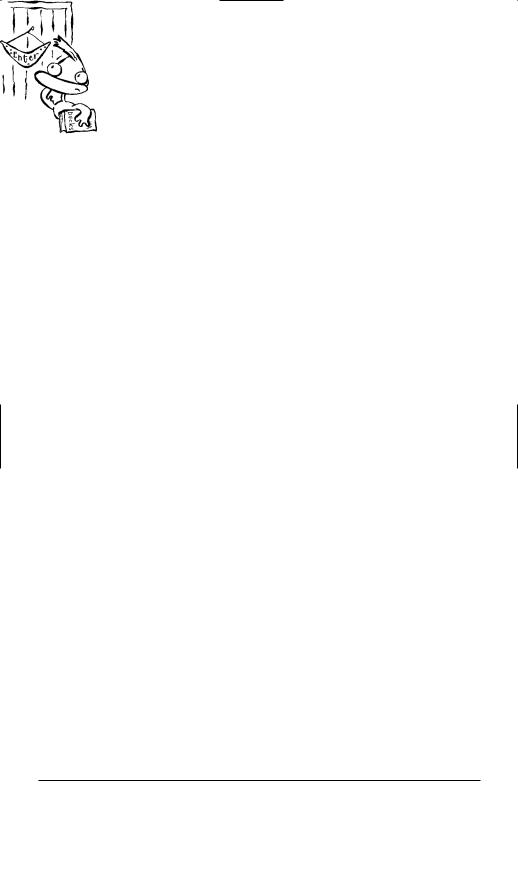
xii |
How to program using Java |
and should work unchanged with other comparable Java systems. One issue might be that we’ve chosen to use the ArrayList structure, which only appeared in JDK version 1.4.
There’s one last thing we need you to do before we start. We don’t know what Java system you’re planning to use. We know nothing about your editor- of-choice, and we don’t even know what operating system you’re using. To be honest, we don’t much care. We’ve ignored all these issues, since we want this book to be useful to everyone. Obviously, though, there are some things your students need to know. As you read through the book you’ll see that we’ve told them about something called the Local Guide.4 We need you to put this together for us. Here you can describe how your system works, you can set down coding or layout standards if you want to, and you can pass on any other local wisdom. You could probably combine it with some existing set of notes. We hope that’s not too much work for you. Thanks. The exercises at the end of Chapter 2 include most of the things that we need you to make sure that your students know.
Finally, we hope you agree with our reasons for writing this book. If you do, we’re ready to go and teach some programming!
4If you were to suspect that we’ve “borrowed” this idea from Leslie Lamport’s LaTeX book, you’d be quite correct.
